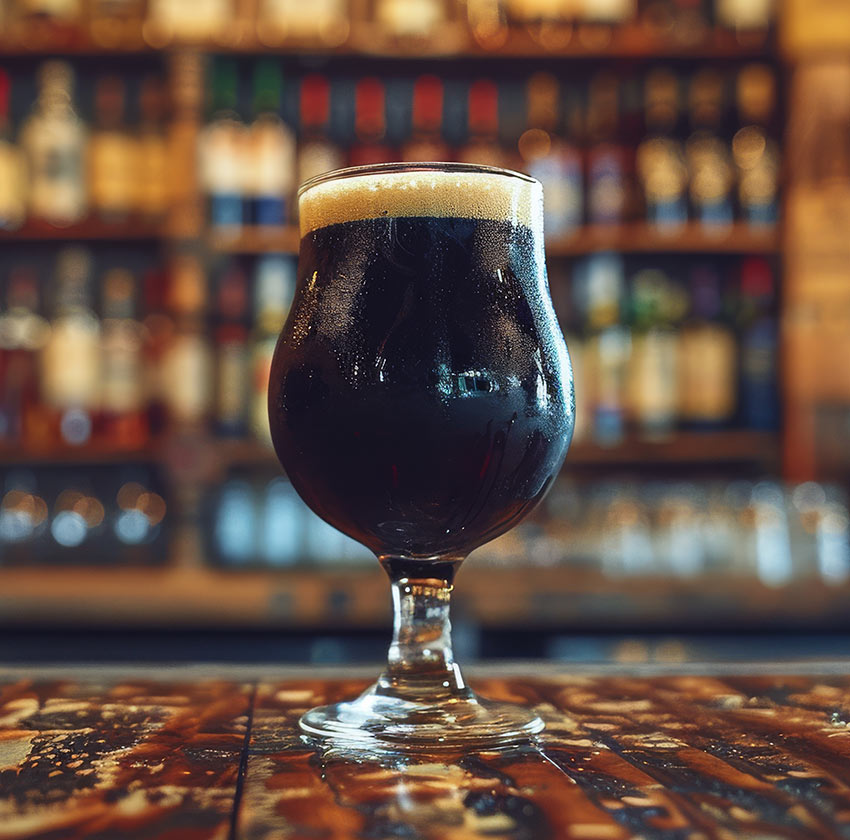What is it, what does it taste like?
Baltic porter is a strong, dark beer, historically originating from the countries of the Baltic Sea basin. You can read more about the history of the style here.
Baltic porter differs greatly from other porters. Unlike the English porter, also known as brown porter, and the American porter, known as robust porter, Baltic porter is a bottom-fermented beer. There are breweries, however, that have a slightly different opinion on the subject (e.g. Pohjala from Estonia) and use top-fermenting yeast for their Baltic porters.


Discrepancies
There are also some differences on the subject of what parameters a Baltic porter should have, but the discussion here seems pointless – the character of a Baltic porter cannot be achieved with an extract lower than 17-18 Plato.
The best classic Baltic porters have 20-22 Plato, there are also imperial versions, i.e. stronger ones, which can have over 30 Plato.
Parameters
Color
Dark brown to almost black. Ruby highlights should appear against the light. It should not be completely black, although it may look that way at first glance. Clear, but a slight opalescence is possible. It should definitely not be obviously cloudy or muddy. Clarity and color are best assessed against the light, in a small diameter glass, or by tilting the goblet, snifter or other tasting vessel.
Foam
Thick, fine, not very abundant, medium durability. Ideally, a thin layer should remain on the beer surface. Color from light beige to brown. Should leave marks on the glass.
Carbonation
Low to medium.
Malt aromas
Dominant, high intensity. We can find the full spectrum of malt aromas in this beer. Notes of caramel, biscuits, bread crust, nuts, cake, toffee are complemented by roasted aromas such as chocolate, coffee. However, roasted notes cannot dominate, and even more so cannot give burnt aromas. Ashy notes are undesirable. The profile is complemented by notes of dark fruits such as cherries, plums, figs.
Hop aromas
None, or low. If they appear, they should be of the classic, noble varieties. Herbal, spicy, earthy notes may appear at low intensity.
Fermentation aromas
Low. Notes of apples, bananas are definitely undesirable. Alcohol can appear in the aroma, but it cannot be pungent, solvent-like.
Flavor
Dominant malt flavors, medium-high to high intensity. Hop flavors absent. Roasted flavors in the background, cannot dominate. Medium to medium-high sweetness.
Bitterness
Low to medium. It comes from both hops and roasted malt. It should be a counterpoint to the sweetness, not obvious or dominant. It should not be sharp or lingering.
Mouthfeel
Medium-high to high body. Smooth. Warming effect from alcohol present, but alcohol should not be burning.
Finish
Long, complex.
